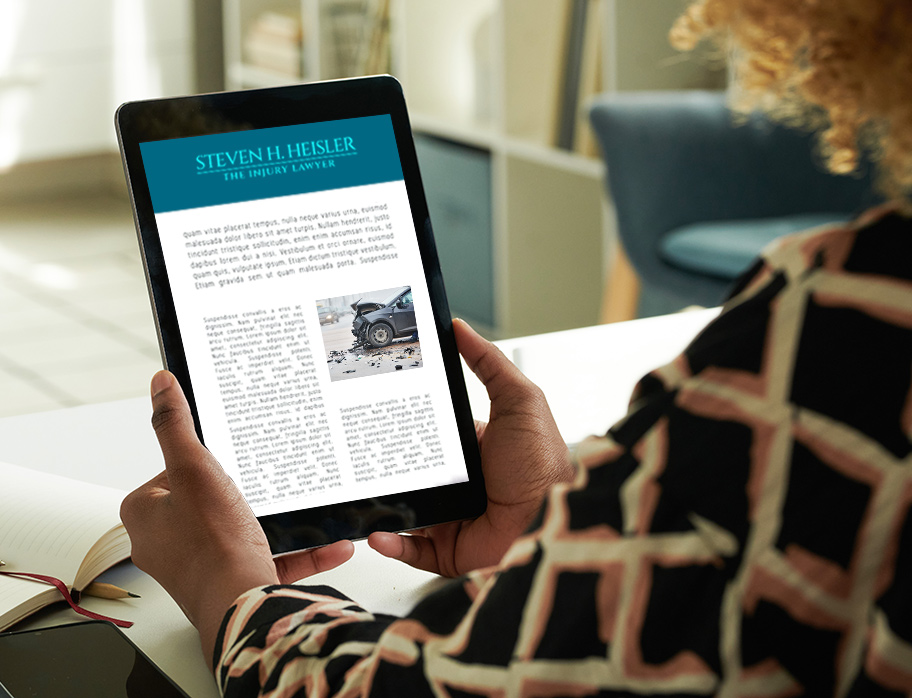How Drowsy Driving Has Become Rampant in the U.S.
 When Karen Roberts finished an overnight Christmas shift at Cincinnati Children’s Hospital, the recent nursing school graduate had gone 24 hours without sleeping. She was exhausted, but she assumed she could get behind the wheel of her car and make it home safely.
When Karen Roberts finished an overnight Christmas shift at Cincinnati Children’s Hospital, the recent nursing school graduate had gone 24 hours without sleeping. She was exhausted, but she assumed she could get behind the wheel of her car and make it home safely.
As Roberts got closer to her home, she considered stopping to get a soda to keep her awake. She could tell she was struggling. But then again, she was only a few miles from her destination. Surely, she thought, she could make it just a little bit longer.
Unfortunately, Karen was wrong. As she drifted off to sleep, her vehicle collided with another vehicle at an intersection.
As Roberts told NBC News, she suffered a traumatic brain injury, spent nine days in a coma and another two months in the hospital. Though the crash happened several years ago, in 1988, she still suffers headaches that serve as a reminder of her decision to drive while tired. Roberts is now an advocate for drowsy driving awareness.
The fact that Roberts is still alive to tell her story makes her more fortunate than over 5,000 motorists who lose their lives every year in drowsy-driving crashes. Research indicates that the problem of driver sleep deprivation is on par with driver intoxication and distraction. And judging by the studies of fatigue in the United States, it’s a problem that should concern all of us.
Fatigue in the U.S.
A report based on a National Safety Council survey found that an alarming number of Americans are dangerously fatigued. The NSC found that 43 percent of Americans said they don’t get enough sleep to avoid risks while driving or doing their jobs. Perhaps even more concerning is the fact that 97 percent of respondents said they have at least one of the nine risk factors for fatigue.
How Drowsiness Impacts Driving Performance
Drivers who have just one to two hours short of a full night’s sleep might be doubling their chance of being involved in a drowsy-driving crash. The less sleep you have, the greater your crash risk becomes. Someone who gets only four to five hours of sleep might have four times the risk of being involved in a crash, according to AAA Foundation for Traffic Safety.
The most obvious risk of sleep-deprived driving is falling asleep behind the wheel, but fatigue also affects our reaction time and decision-making processes. AAA says that missing two to three hours of sleep puts the fatigued driver’s performance on par with someone who is legally drunk.
Who is at Risk for Drowsy-Driving Crashes?
Commercial vehicle drivers are notoriously at risk for fatigued driving. The very nature of driving a long-haul truck, for example, lends itself to fatigue behind the wheel. This is one of the primary reasons there is a federal limit on how many hours a commercial driver can drive in a 24-hour period.
But even those of us who don’t drive professionally can be at risk during our work-related drives. Night shift workers, in particular, face a much greater risk of drowsy driving than other drivers. That means around 9.5 million workers in the United States could be vulnerable to fatigue-related crashes.
The list of people at greater risk for fatigued-driving crashes also includes young people (particularly males ages 16 to 25), people with untreated sleep disorders and people who take medications that cause drowsiness. It also includes people who get less than seven hours of sleep per night.
When you tally up the demographics vulnerable to drowsy driving, you get a clearer picture of how big the threat really is. The chances are good that you or someone close to you fits the bill for someone who is regularly driving while tired.
Preventing Fatigued-Driving Crashes
Now that we’ve established the scope of the problem, we can find ways to eliminate sleep deprivation and avoid drowsy-driving crashes in our own lives. The most effective way to avoid driving while tired is to get a full night’s rest. Though everyone is different when it comes to the amount of sleep they need to function properly, most need at least seven hours to maintain the focus and alertness required to operate a vehicle.
Caffeine can also be helpful if you feel as though you are starting to get fatigued behind the wheel. However, it’s important to note that no amount of caffeine can substitute for sleep and, if you are a regular consumer of caffeine, its effects will do even less to keep you awake when you’re tired.
It’s also important to know what doesn’t work for drowsy drivers. One widely-held misconception is that loud music and open windows make a driver more alert. This will not make you more alert if you are sleep-deprived. If you are at the point where you think you need to blast music and lower all your car windows, you should pull over and take a short nap instead.
Drowsy-Driving Crashes are Common – But Preventable
Like so many types of crashes, drowsy-driving crashes are preventable. First and foremost, make sleep a priority. Second, be aware of any risk factors that you might be facing, such as sleep disorders or taking certain medications. Third, if you are drowsy while driving, make sure you pull over to take a nap and grab a cup of coffee. If there are others in your vehicle that can take the wheel once you’ve become fatigued, don’t be afraid to let them drive while you take a nap.
If you’ve been injured by a drowsy driver, you can take legal action to get the compensation you deserve. At the Law Offices of Steven H. Heisler, we have devoted our practice to defending the rights of personal injury victims. If you have been injured in an accident, you should not delay. Contact Steve Heisler today for a free initial consultation by calling 1-410-625-4878 or use our confidential online form.

Attorney Steve Heisler
Steve Heisler decided in 1996 that he was going to focus his law practice exclusively on injury cases. Since then, he has been representing injured people against insurance companies, disreputable medical practitioners and Big Pharma, and doing it with compassion, honesty and level-headed rationality. [ Attorney Bio ]


